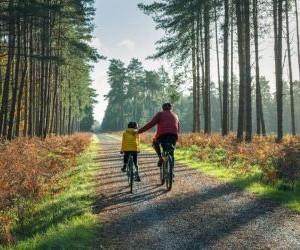Explore the best cycling and bike touring routes in Raleigh, from scenic greenways to wooded trails and smooth city rides—perfect for a vacation on two wheels.
WHAT IS BIKEPACKING AND HOW DO I START?
Bikepacking blends cycling and minimalist camping into one adventurous package. Instead of heavy panniers, riders carry lightweight gear on their bikes to explore long trails, gravel roads, and remote landscapes. For beginners, the idea can feel daunting, but with the right preparation, it becomes an empowering way to travel. This article explains what bikepacking is, why it’s growing in popularity, and how you can begin your own journey with confidence—covering gear, planning, and mindset. Whether you want a weekend trip or a multi-week expedition, bikepacking offers freedom and discovery on two wheels.

Understanding bikepacking
Bikepacking is the fusion of long-distance cycling and lightweight backpacking. Instead of touring with bulky panniers, riders distribute compact bags on their frame, handlebars, and seatpost. This minimalist style allows cyclists to explore rugged terrain, gravel paths, and singletrack trails inaccessible to traditional touring bikes.
The philosophy behind bikepacking centers on efficiency and freedom. Less gear means more mobility, and the focus shifts from comfort-driven setups to adventure-driven journeys. This has fueled its rise among outdoor enthusiasts looking to blend cycling endurance with backcountry exploration.
Why bikepacking is different from touring
Though often compared to bike touring, bikepacking distinguishes itself in terrain, gear, and culture. Touring typically sticks to paved roads, whereas bikepacking thrives on mixed surfaces—forest service roads, mountain passes, and desert tracks.
Bikepacking setups prioritize light, versatile bags over rigid racks.
Routes often target wilderness areas with limited resupply options.
The community emphasizes adventure and discovery over mileage or speed.
It blends cycling with camping skills like navigation, water sourcing, and outdoor cooking.
In essence, bikepacking expands cycling into an immersive experience where the destination matters less than the journey itself.
Essential gear for beginners
Starting bikepacking doesn’t mean buying the most expensive gear on the market. The key is to balance weight, functionality, and durability. A beginner-friendly setup includes the basics of cycling and camping, adapted for efficiency on the road or trail.
Bike and storage systems
Any bike can be used for bikepacking, but gravel, hardtail mountain bikes, and adventure bikes are best suited for mixed terrain. The storage system typically includes:
Handlebar bag for sleeping gear.
Frame bag for food, tools, and electronics.
Seatpost bag for clothing and essentials.
Accessory pouches for snacks and hydration.
Camping and survival essentials
Bikepacking requires packing lean while ensuring safety in remote settings. Beginners should focus on three areas: sleep, food, and water.
A lightweight tent, bivvy sack, or hammock depending on the environment.
Compact sleeping pad and bag rated for local conditions.
Portable stove or cold-soak meals for nutrition.
Filtration system and extra bottles for water safety.
Tools, spare tubes, and a first aid kit round out the essentials, ensuring riders can handle both mechanical and environmental challenges.
Planning your first trip
A successful bikepacking trip depends on planning, but the goal isn’t perfection—it’s learning through experience. For beginners, starting small with an overnight or weekend route builds confidence without overwhelming logistics.
Choosing your route
Routes should reflect your skill level and available time. Focus on manageable mileage with varied terrain and accessible bailout options. Many online communities share GPS tracks, reviews, and safety notes for popular routes.
Gravel loops are ideal for first-timers.
Rail trails and canal paths provide easy navigation.
National forests often host multi-day backcountry routes.
Mindset and safety
Beyond logistics, bikepacking demands flexibility. Weather, mechanical issues, and physical fatigue are inevitable. The best mindset treats these obstacles as part of the story. Pack conservatively, listen to your body, and adapt plans when necessary.
Safety also includes informing someone of your route, carrying offline maps, and respecting local land regulations. These habits reduce risks and encourage sustainable exploration.
Your first trip may feel experimental, but that’s the point—every mile builds knowledge that makes future journeys smoother, longer, and more rewarding.
YOU MAY ALSO BE INTERESTED






